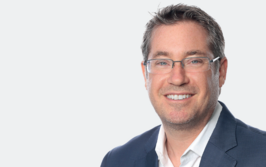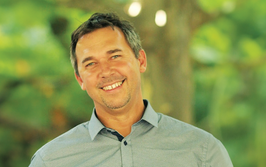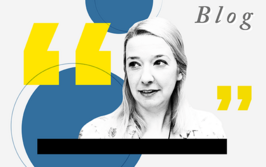
Russian Revolution for Biosimilars
Biologics are expensive, but so too are biosimilars. Could local manufacturers based in Russia and other emerging markets, with their inherently lower costs, be well placed to develop cheaper biopharmaceuticals to benefit public health?
Many people outside of Russia do not know much about our biopharma market. In fact, the Russian pharma market is one of the fastest growing in the world – and biologics make up almost half of the Russian Federal government’s spend on drugs and almost 30 percent of the overall tender market. Compared with western markets, the volume of biologics sold is small, but because of the costs of these important medicines, the burden on the country’s healthcare budget is tremendous. Therefore, the government has been interested in affordable, non-original biologics for years. It is perhaps slightly surprising then that Russia did not have a specialized regulatory pathway for biosimilars until 2014.
Rise of the regulations
Prior to 2010, the regulatory environment for medicines in Russia was far from stringent – and a large number of copycat versions of epoietins, interferons, filgrastims and other biologics were launched in the country without any comparative clinical studies or comparable analytical data. On April 13, 2010, the Russian government introduced a Federal “Law on Circulation of Medicines” to better regulate the pharma industry, including both human and veterinary medicines. The law still didn’t include a defined pathway for biosimilars, but there was a clear requirement for clinical trials for all drugs. Biosimilars, therefore, were treated as new biologicals and required extensive clinical testing. A biosimilars pathway was finally introduced in 2014 – and is mostly indistinguishable from the EMA’s framework for biosimilars. In 2016, Eurasian Economic Union laws were also introduced whereby a drug approved in one country of the Union can be launched in all other Union members. Today, requirements for approval of biosimilar in countries of the Eurasian Economic Union are much the same as for other regulated markets.
What often surprises outsiders is how poorly reimbursed popular anti-TNF drugs, such as Humira, Enbrel and Remicade, are in Russia – the resulting market is disproportionately small compared with other global markets. The reason for this is simply that the Russian government sees oncology, diabetes and vaccines as the priorities for healthcare expenditure. As a result, many biosimilar developers in Russia – including my own company – have steered away from anti-TNFs, even though they have been popular targets for biosimilars in other countries. Instead, the big focus is on oncology biosimilars, particularly monoclonal antibodies (mAbs), as well as insulin and vaccines because these are all well reimbursed by the government (depending on price).
At what cost
Rising regulatory requirements are important for patient safety, but there is a trade-off. The return on investment for biosimilar products in Russia is not as attractive as it was prior to 2010 because of the costs needed to meet national regulations. As a result, there are few local companies developing biosimilars or innovative biologics – most pharmacy drugs in Russia are imported. Biopharma manufacturing is expensive in all countries and the costs are passed on to the patient and government in terms of high drug costs.
My company, BIOCAD, has invested significantly in our infrastructure to meet regulatory requirements (not an easy journey), which has enabled us to launch many biosimilars, including the first biosimilar monoclonal antibody to be approved in Russia – AcellBia (rituximab), which received marketing approval in April 2014. We’ve also launched products in a number of medium-regulated markets and are hoping to launch a biosimilar in the US and Europe in the future.
Big international pharma companies have been very keen to capitalize on the growth opportunities in Russia and other emerging markets, and have launched a number of valuable medicines – but the high prices are a problem (this is seen on a global scale with many western markets also struggling to afford the latest biological drugs). As an industry, we know that patients need cheaper medicines, but for many companies it is hard to grant this wish. And the problem is even more pronounced in emerging markets, which have significantly smaller healthcare budgets than the US or European Union (EU) countries. Reimbursement for the most expensive biological medicines is completely impossible.
I believe that Russian companies have the potential to develop drugs cheaper than their western counterparts. For example, the cost of human resources in Russia is very low – and yet the quality of employees is high, which is a valuable factor. At the moment, I’d even go as far to say that the cost of developing a biologic in Russia is lower than in India, which is generally seen as one of the most cost-effective countries in the world for biopharma manufacture. However, the time and costs of running clinical studies, coupled with the need for significant investments in manufacturing operations, have made life difficult for local manufacturers used to the pre-2010 Russian industry.
Access all areas
The development of biosimilars is incredibly important in helping to increase access to biologic medicines. A good example of the impact that a biosimilar can have is the drop in registered price for 400 mg of Avastin (bevacizumab). It was extremely high when it first launched in Russia – 61,536 Russian ruble, which is around US $1024 with today’s exchange rate. Only a small portion of patients who needed the drug actually received it, otherwise the drug would have decimated the government’s healthcare budget. In 2015, we released a biosimilar bevacizumab that was initially 30 percent less expensive. Due to price competition with the originator, the price later dropped more than 70 percent – and the number of patients receiving the treatment increased by around four times. The biosimilar changed the treatment paradigm in Russia. Another example is filgrastim. Since the launch of the first, non-original granulocyte-colony stimulating factor (G-CSF) product in 2006, the price of filgrastim in Russia dropped 70 percent in the local currency. This made the drug readily available for oncologists and it became aggressively used in modern chemotherapy regimens that require prophylactic use of G-CSF. As a result, the G-CSF market expanded 9-fold, despite the price erosion. Most importantly, it allowed more effective chemotherapy regimens to become the standard of care in Russia, improving outcomes for oncology patients.
Biosimilars of complex biologics, such as mAbs like rituximab and trastuzumab, have been approved for a few years now. They are registered or sold in dozens of countries worldwide, but access is still very limited, particularly in lower regulated markets, such as those in Latin America and North Africa. The industry is seeing some really good advances in terms of new drugs – especially in immuno-oncology – but these advances are useless if the drugs are too expensive for governments and patients to afford. From a personal point of view, I am very passionate about immuno-oncology because I focused on this topic during my university studies. Interestingly, my PhD thesis focused on CAR-T cells, but back then the technology was not well developed – neither my supervisor nor I believed that they would actually make it into the clinical setting!
I’m excited to see these therapies close to reaching the market, but it’s disappointing to think that they will be unavailable to millions of patients, especially those in emerging markets. We biosimilars developers have a duty to develop not just high-quality medicines, but medicines that are affordable and available to patients who need them – in both developed and emerging markets.
The local benefit
So how do we make sure that the manufacture of biosimilars is cost effective? Large global pharma companies, such as Pfizer or Amgen, have a head start on biosimilar development, with vast amounts of funds, huge numbers of scientists and vast experience of operating in highly regulated markets. Smaller, local companies, however, that can develop the necessary infrastructure could end up with a competitive edge over these global players. What works in western markets does not necessarily work in emerging markets and bigger is not necessarily better – particularly as the large, existing infrastructure of big pharma companies can be inflexible and difficult to update.
In my experience, it is easier to make a price-competitive biologic within a reasonable time frame if you have all the infrastructure you need in-house – and flexible, modular, single-use facilities are key. The benefits of these technologies are well known in the global biopharma industry, but such technologies are difficult for larger companies with established, stainless steel facilities to roll out, which gives newer players a competitive advantage. Single-use bioreactors and a facility that can accommodate multiple product manufacturing allow companies to extend capacity as and when required; it’s very easy to bring in more single-use bioreactors to increase your output. Single use also significantly decreases capital investment, which can make a huge difference in terms of cost of goods (COGs). There are also other ways to address COGs. For example, we’ve developed our own critical raw materials, such as cell culture media and Protein A chromatography media. By bringing manufacturing of these raw materials in house, we’ve decreased COGs by several times, which helps us to be competitive in emerging markets.
Being “local” also has benefits. In Russia, for example, the government offers incentives and preferences for local manufacturers – and similar practices can be seen in many other emerging markets. If you are the only company with a specific biosimilar or biologic then being local is not quite so important, but if there is competition in the area then an international company will find it very hard to compete without a local partner. In Russia, original biologics and biosimilars are interchangeable – price is the deciding factor.
I hope that my company will have the opportunity to treat many more patients in the emerging markets – and that we can eventually bring cost-effective medicines to Europe too. Our main focus has historically been on biosimilars, but given the cost advantages of being based in Russia we believe that we can develop well-priced, innovative biologic medicines for the global market. At the moment, we have a checkpoint inhibitor monoclonal antibody in Phase 1 clinical development. Checkpoint inhibitors have revolutionized cancer treatment in the last few years, but are not as widely available as they should be, in either developed or emerging markets. And if smaller companies like mine can do something about that, you can be sure that we will!
Roman Ivanov is Vice President, Research and Development, at BIOCAD, Russia.
Meet the Author: Roman Ivanov
How did you first become interested in biopharma?
At school, I used to take part in Russia’s national cell biology “Olympic Games” – which are competitions for students in different areas of biology. I dedicated the last few years at my high school to biology and I won several international competitions. When I left school, it was at a time of economical turmoil in Russia and there wasn’t a lot of funding for science. I decided to go to medical school because as a doctor your income is not affected by the economic situation.
I spent 6 years in medical school, but I was also able to get involved in the development of Russia’s first research center for medical genetics. It was situated in the oncology center so I was able to get involved with some state-of-the-art proprietary research in molecular diagnostics for haematological cancers in children. I became particularly interested in molecular genetics and molecular biology. At the end of medical school, I conducted scientific research in the field of molecular immunology at the Hematology Department of Utrecht University Medical Centre in the Netherlands. Interestingly, for my PhD thesis I chose the topic of CAR-T cells. CAR-T cells are one of the hottest topics of research right now, but back then the technology was not well developed – both my supervisor and I didn’t believe they would actually make it into the clinical setting!
How did you come to work for BIOCAD?
After graduating, I returned to Russia where I was invited by the former Minister of Health to organize a cell therapy facility in Moscow in the academic Medical Centre. I spent a year doing that until the funds for the project dried up, so I decided to look for a job in industry – and it was a good time to enter industry because there was a lot of early, meaningful work taking place in biologics. I ended up managing clinical trials for granulocyte colony stimulating factor. This was the beginning of my work at BIOCAD. I was employed as Medical Director and I had just one employee at first. But the company has grown significantly since then and gradually my area of responsibility grew to include the management of the overall product development process – and more recently national and international business development. Today, I am responsible for the clinical development of our biosimilar candidates, as well as preclinical studies of innovative biological medicines being developed by BIOCAD.
Roman Ivanov is Vice President, Research and Development, at BioCad, Russia.


















